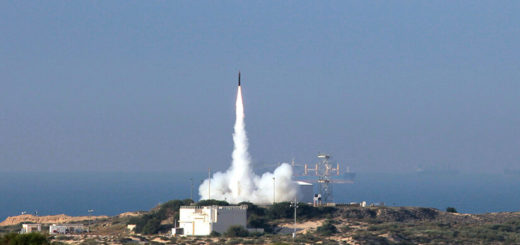South Korea to speed up KF-21 Boramae strike capability, reportedly develop ALBM
South Korea has fast-tracked plans to introduce air-to-ground capabilities for the KF-21 Boramae, moving the timeline forward by more than a year. Reports also indicate that an air-launched ballistic missile (ALBM) is being developed for deployment from the fighter.
At the 170th Defense Project Promotion Committee meeting on August 8, 2025, the Defense Acquisition Program Administration (DAPA) approved a revision to the KF-21 system development plan, adding an expanded program of weapons integration tests. This change will allow Block II aircraft to begin fielding strike weapons in the first half of 2027, instead of the original late-2028 schedule.
DAPA said the acceleration will boost the Republic of Korea Air Force’s (ROKAF) operational readiness, enhance the domestic aerospace industry’s competitiveness, and improve the Boramae’s export prospects.
Air-launched ballistic missile in development?
In a separate development first reported by defense journalist YoungHak Lee on X, South Korea is reportedly working on an air-launched ballistic missile that could be carried by the KF-21. The weapon is understood to be based on the KTSSM-2 (Korean Tactical Surface-to-Surface Missile) Block-II, also known as the Ure (Thunder) or CTM-290 tactical ballistic missile. Initially developed for launch from ground vehicles, the KTSSM-2 is a precision strike system designed for short-to-medium ranges.
South Korea has officially announced the development of an air-launched hypersonic ballistic missile.Two missiles will be armed on the KF-21 and are expected to be based on the KTSSM series missiles. The concept is similar to the Israeli Air LORA and ROCKS, or the American Mako.… pic.twitter.com/kMPrQkAbEW— Mason ヨンハク (@mason_8718) August 12, 2025
In its air-launched form, the missile would be about 4.1 meters long and could be carried in pairs by the KF-21. Projected performance figures suggest a speed of Mach 5 to 10 and a range of 500 to 1,000 kilometers (300 to 600 miles), giving the Boramae a standoff strike capability against high-value targets.
While often tautologically described as “hypersonic,” an air-launched ballistic missile is distinct from a hypersonic glide vehicle or hypersonic cruise missile. An ALBM is released from an aircraft, then follows a ballistic or quasi-ballistic trajectory after boost, with limited maneuvering, typically near impact. Adapting a ground-based ballistic missile for air launch follows a similar conceptual path to Russia’s Kh-47M2 Kinzhal, itself derived from the ground-launched Iskander.
By contrast, next-generation hypersonic systems sustain Mach 5-plus flight within the atmosphere while generating lift and executing continuous maneuvers. All ballistic missiles exceed Mach 5 for much of their trajectory, but they do not maintain maneuverable hypersonic flight in the atmosphere.
RELATED
A comprehensive guide to hypersonic weapons: what are they, and why the buzz?
South Korea is also pursuing other advanced air-launched missile projects for the KF-21, including systems in the hypersonic cruise missile category, which are reportedly progressing toward operational readiness.
The KF-21 Boramae program
Formerly known as KF-X, the KF-21 Boramae is a 4.5-generation multirole fighter jointly developed by South Korea and Indonesia. The program was launched to replace the Republic of Korea Air Force’s (ROKAF) aging fleets of F-4 Phantom IIs and F-5 Tiger IIs, while strengthening the country’s domestic aerospace industry and export potential.
The KF-21 completed its maiden flight in July 2022 and has since progressed through a series of prototype tests, including supersonic flight trials, weapons separation tests, and aerial refueling. The Block I configuration focuses on air-to-air missions and is set to be delivered between 2026 and 2028. Block II will add air-to-ground and reconnaissance capabilities, with the first strike-capable aircraft now scheduled for early 2027 following DAPA’s recent acceleration decision.
RELATED
South Korea’s first mass-produced KF-21 fighter jet enters final assembly
Full-rate production is planned through the early 2030s, with the ROKAF expected to receive at least 120 aircraft. In addition to the domestic order, South Korea is actively positioning the Boramae for export, with the United Arab Emirates among the countries to have expressed interest.
The aircraft’s design incorporates features to reduce its radar cross-section, an advanced avionics suite, and compatibility with a wide range of weapons, including those developed specifically for the KF-21. The post South Korea to speed up KF-21 Boramae strike capability, reportedly develop ALBM appeared first on AeroTime.
South Korea has fast-tracked plans to introduce air-to-ground capabilities for the KF-21 Boramae, moving the timeline forward by…
The post South Korea to speed up KF-21 Boramae strike capability, reportedly develop ALBM appeared first on AeroTime.





